Chad Lefkowitz-Brown’s “Approach Notes and Enclosures” Improv Technique
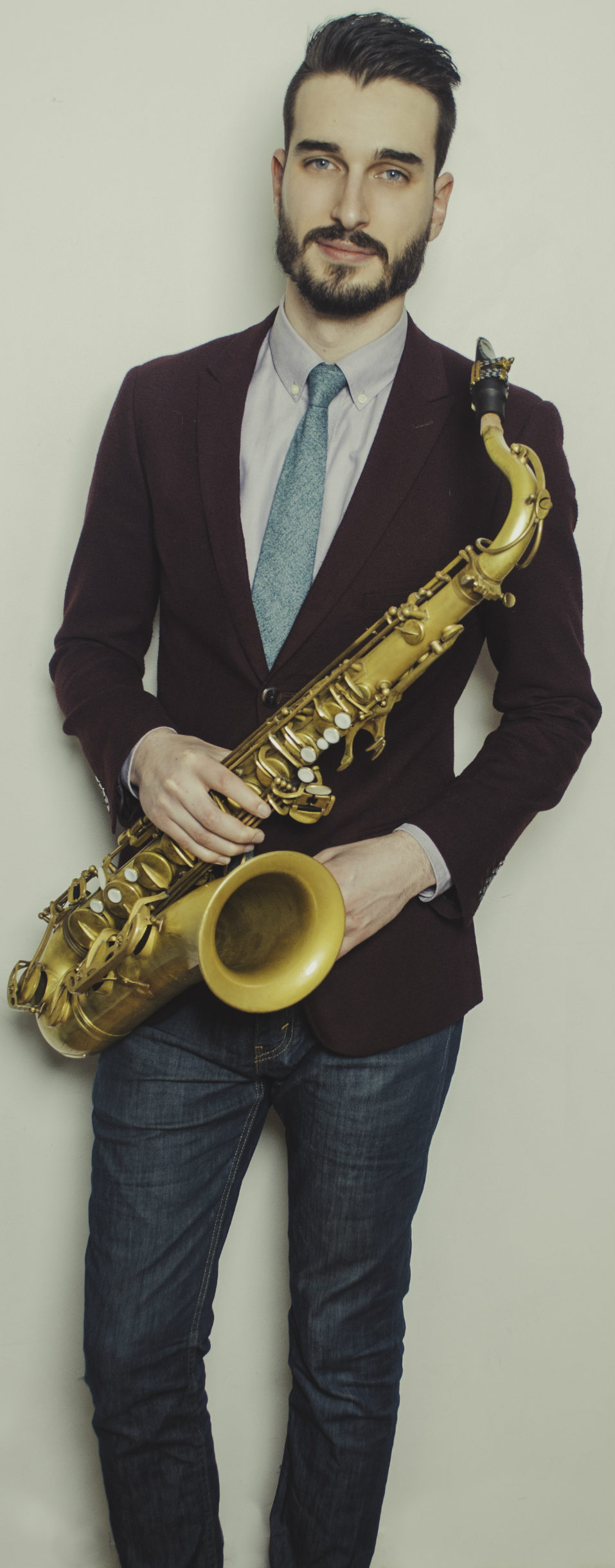
Introduction
I have been taking lessons from saxophonist Chad Lefkowitz-Brown, in which we have discussed a topic called “Approach Notes and Enclosures”. Chad informed me that this concept has helped many of his students move away from just playing scales over chords or “button pushing” and has helped students develop lines that sound more like Bebop/Post-Bop language. I have since been practicing and continue to work on this concept and can tell that so far I have noticed an improvement in the way I play and approach various chord changes. Since I believe many players would benefit from this topic, Chad was nice enough to discuss and share this topic in further detail.
Approach notes are notes leading into a resolution or “target note”. If you want to play something melodic, harmonious, or “inside” of the chord, you can approach a resolution or target note that is a chord tone, or a note in the chord scale. For instance, the note “D” in G7. Enclosure is when you play a combination of approach notes that are both above and below the target note. Therefore, enclosing the resolution note. When analyzing various solos from Sonny Rollins, John Coltrane, Charlie Parker, etc. you can see they use approach notes and enclosures.

This example is from Sonny Rollins’ solo on The Way You Look Tonight from the album “Thelonious Monk with Sonny Rollins.” Here he uses approach note combinations and enclosures over a II – V – I to C major. When labeling this concept, there is a lot of gray area because, for example, a resolution note could also be considered part of the next enclosure. So often times there is no right or wrong way to analyze this concept, but what’s important is to be able to see and hear when it is used, and have an idea of what notes they’re landing on and how they’re approaching the resolutions.
Chad says, “I think at the time Sonny, Trane, and Bird didn’t think of this concept because it hadn’t been labeled yet, similarly to how ‘counterpoint’ wasn’t labeled when Bach had mastered the technique. But I think the jazz legends were very aware of all the combinations of notes that they could play to embellish the notes that they wanted to resolve to, and I think that’s what the goal is when you practice approach notes – to get better at embellishing resolution notes that are in the scale as opposed to just pushing the buttons of the chord-scale.” Chad also says, “I think it’s important to understand that a lot of times people can get really good at bebop and post-bop language just by learning lots of solos by ear, but when you try to improvise your own lines it can help to specifically practice this concept.” Below, are some examples demonstrating this concept.
Three Note Enclosure and Approach Notes
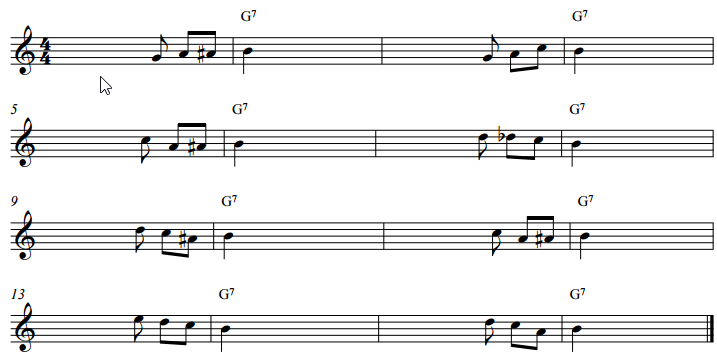
As you can see in the example above, these are various combinations of approach notes and enclosures resolving on the third of G7. The approach notes and enclosures use a combination of diatonic and chromatic notes. Remember, when there is a combination of notes above and below the resolution, that means the approach notes can be classified as an enclosure. I recommend working with these three note enclosures through all 12 keys.
Four Note Approach Note Combos and Enclosures
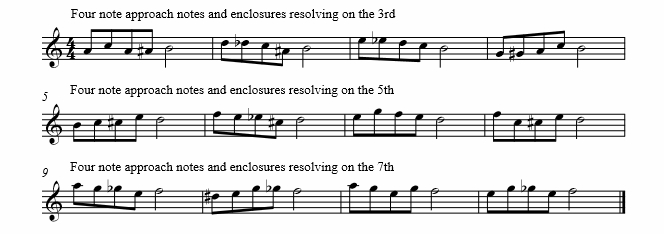
In this example, four note approach note combinations and enclosures are used chromatically and diatonically to land on the 3rd, 5th, and 7th degrees of G7 (mixolydian.) Four note enclosures are a great way to connect ideas and stretch out various phrases.
Approach Notes and Enclosure over a Blues
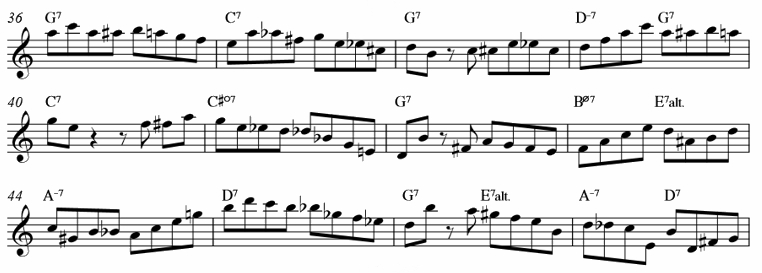
Here’s an etude that Chad wrote applying approach notes and enclosures over a blues.
Developing Your Own Approach Note Combos and Enclosures

Since rhythm changes is so widely played, above is an example of three note approach note combos and enclosures over rhythm changes. The second line from the picture above (measure 61,) is a practice exercise to develop your own enclosures to connect each chord and develop various lines. I recommend filling in the blanks with various approach note combos and enclosures to see how they work within each chord.
Exercise
This exercise below (written in G major) is a great way to practice enclosures that voice lead up and down a major scale. Each measure starts with a four-note enclosure that resolves to a scale tone a diatonic third below where the enclosure starts. Then the resolution note (in the first bar – G) is followed by a three note diatonic enclosure that approaches the enclosure in the beginning of next bar. The shape either moves up a scale degree for the ascending version or down a scale degree for the descending version of the exercise. Remember to practice the below exercise in all 12 keys.
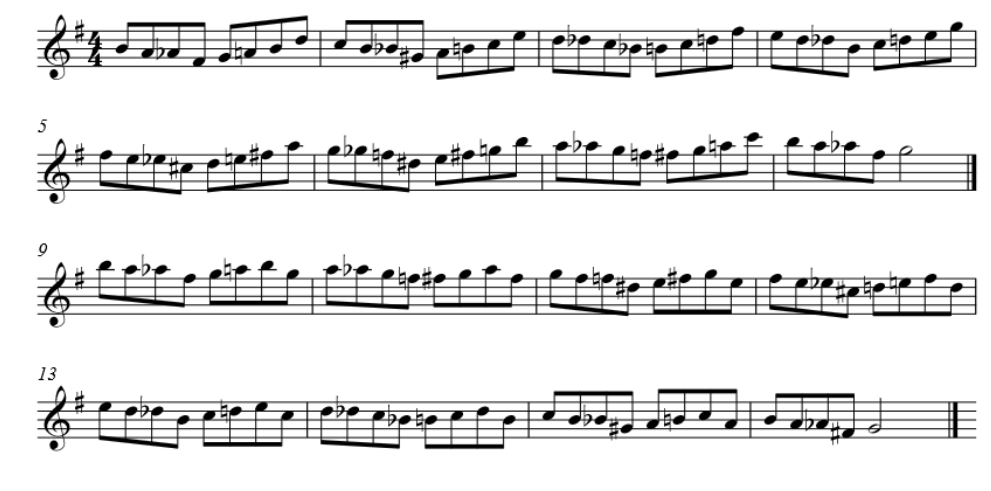
Conclusion
I want to thank Chad Lefkowitz Brown for sharing this concept as well as allowing me to share this knowledge with you. I have seen improvement in my playing while practicing this concept and can say this is just one of the many ideas and practice routines Chad has to offer to help his students’ progress to where they want to be in their playing.
PDF Downloads of Sheet Music Examples (for easier reading and printing)
Four Note Approach Notes and Enclosures
Three Note Enclosures and Approach Notes
Video
Chad Lefkowitz-Brown, Black Nile
Nature Boy – Chad Lefkowitz-Brown
Chad Lefkowitz Brown Website
http://www.chadlefkowitz-brown.com/






July 29, 2016 @ 6:16 am
Still have mine
August 30, 2016 @ 12:35 am
This is too much. I am gonna concentrate on Chads stuff for a while. Great !!
Just a suggestion Chad ; new jacket man, bit small. LOL
March 26, 2018 @ 8:18 am
Thank you so much for putting all this information out there!
March 10, 2021 @ 1:45 pm
Thank you for this intersting information
The Story of Military Band Saxophonist Geoff Vidal, Along with His Favorite Exercises » Best. Saxophone. Website. Ever.
January 20, 2022 @ 7:14 am
[…] business chops, even basic chops. It only takes a few clicks to see who has it figured out like Chad LB and Adam Larson. The saxophone thing to me is the easy part and there are tons of killing players […]